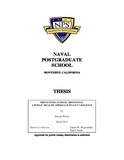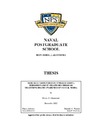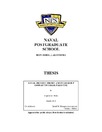Understanding the Rationality of Terrorism
Abstract
While many people like to think of terrorists as irrational fanatics, research has shown this to be inaccurate for most individual terrorists1 and especially for the terrorist group as a whole.2 As rational organizations, terrorist groups operate in environments containing various incentives and constraints, and must calculate their actions accordingly if they are to be successful. Could their actions be too violent? Or not violent enough? What level of violence is rational for terrorists to use? How much is too much and how much is too little? What happens if they use “too much” or “too little” violence? Also, how can the state manipulate the rationality of terrorist violence to make it less rational for the terrorists? This paper explores these and other questions by attempting to think more systematically about the various consequences of different levels of terrorist violence – consequences for the state, the population, and the terrorists themselves. This is not a theoretical paper trying to explain why terrorists choose or execute a particular level of violence; rather, it is a heuristic model that tries to capture all the possible nuances, permutations, and consequences of various levels of terrorist violence. In this way it is more of a theory of how terrorism is socially constructed by the population of the state and how the “rationality” of particular levels of terrorist violence and the social construction of what these levels of violence mean changes over time as populations adapt (or not) to living in a world of terror.
Description
Paper presented at the International Studies Association Conference March, 26 2008
Rights
This publication is a work of the U.S. Government as defined in Title 17, United States Code, Section 101. Copyright protection is not available for this work in the United States.Collections
Related items
Showing items related by title, author, creator and subject.
-
PREVENTING SCHOOL SHOOTINGS : A PUBLIC HEALTH APPROACH TO GUN VIOLENCE
Welch, Edward (Monterey California. Naval Postgraduate School, 2013-03);Gun violence in America must be addressed at the highest levels of society. Newtown, Aurora, and Virginia Tech were attacks on the very fabric of America. School shootings represent attacks on our nations future. A public ... -
TERRORIST GROUP BRANDS: UNDERSTANDING TERRORIST GROUP STRATEGIES THROUGH MEASURING BRAND AWARENESS ON SOCIAL MEDIA
Altarawneh, Murad Z. (Monterey, CA; Naval Postgraduate School, 2022-12);Terrorist groups such as the Islamic State adopted commercial marketing principles and effectively communicated with the targeted audience through social media to enhance operational achievements on the ground. This thesis ... -
SOCIAL IDENTITY THEORY AND INTERGROUP CONFLICT IN ISRAEL/PALESTINE
Felty, Stephen M. (Monterey, CA; Naval Postgraduate School, 2019-03);Intergroup dynamics have been a central vector in long-lasting identity conflicts around the globe. In Israel-Palestine, the conflict has not been reduced to the same level of sustained peace as it has in other countries. ...



 isa08_proceeding_252158.pdf (131.7Kb)
isa08_proceeding_252158.pdf (131.7Kb)

